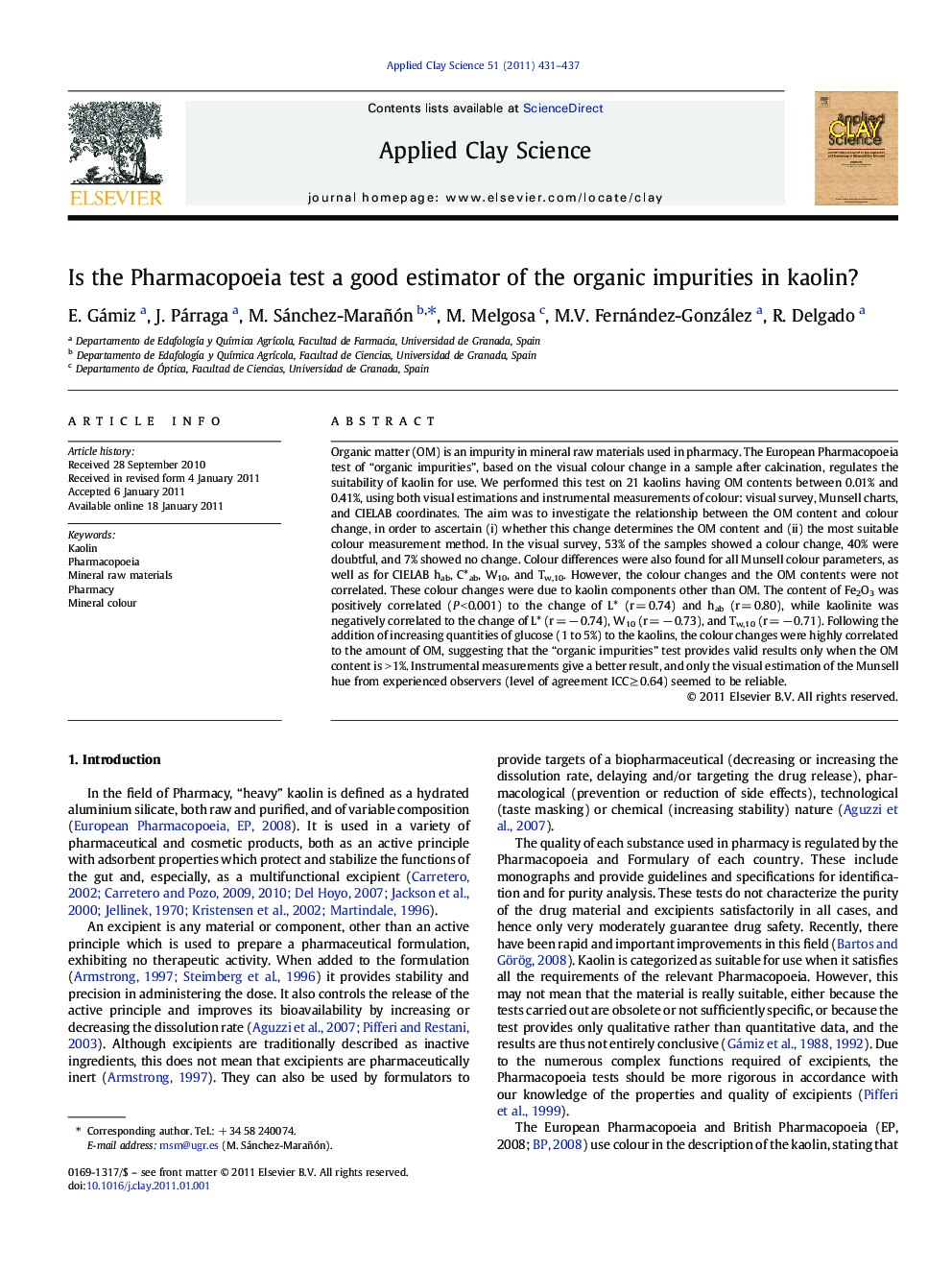| Article ID | Journal | Published Year | Pages | File Type |
|---|---|---|---|---|
| 1695594 | Applied Clay Science | 2011 | 7 Pages |
Organic matter (OM) is an impurity in mineral raw materials used in pharmacy. The European Pharmacopoeia test of “organic impurities”, based on the visual colour change in a sample after calcination, regulates the suitability of kaolin for use. We performed this test on 21 kaolins having OM contents between 0.01% and 0.41%, using both visual estimations and instrumental measurements of colour: visual survey, Munsell charts, and CIELAB coordinates. The aim was to investigate the relationship between the OM content and colour change, in order to ascertain (i) whether this change determines the OM content and (ii) the most suitable colour measurement method. In the visual survey, 53% of the samples showed a colour change, 40% were doubtful, and 7% showed no change. Colour differences were also found for all Munsell colour parameters, as well as for CIELAB hab, C*ab, W10, and Tw,10. However, the colour changes and the OM contents were not correlated. These colour changes were due to kaolin components other than OM. The content of Fe2O3 was positively correlated (P < 0.001) to the change of L* (r = 0.74) and hab (r = 0.80), while kaolinite was negatively correlated to the change of L* (r = − 0.74), W10 (r = − 0.73), and Tw,10 (r = − 0.71). Following the addition of increasing quantities of glucose (1 to 5%) to the kaolins, the colour changes were highly correlated to the amount of OM, suggesting that the “organic impurities” test provides valid results only when the OM content is > 1%. Instrumental measurements give a better result, and only the visual estimation of the Munsell hue from experienced observers (level of agreement ICC ≥ 0.64) seemed to be reliable.
Research Highlights► Calcination causes colour changes in kaolin. ► Visual changes are not always evident in samples having 0.01–0.41% in organic matter. ► Visual colour differences are better perceived by experienced observers. ► Instrumental colour differences are only correlated with mineral components. ► The Pharmacopoeia test ‘organic impurities’ for kaolin is not safe.
